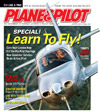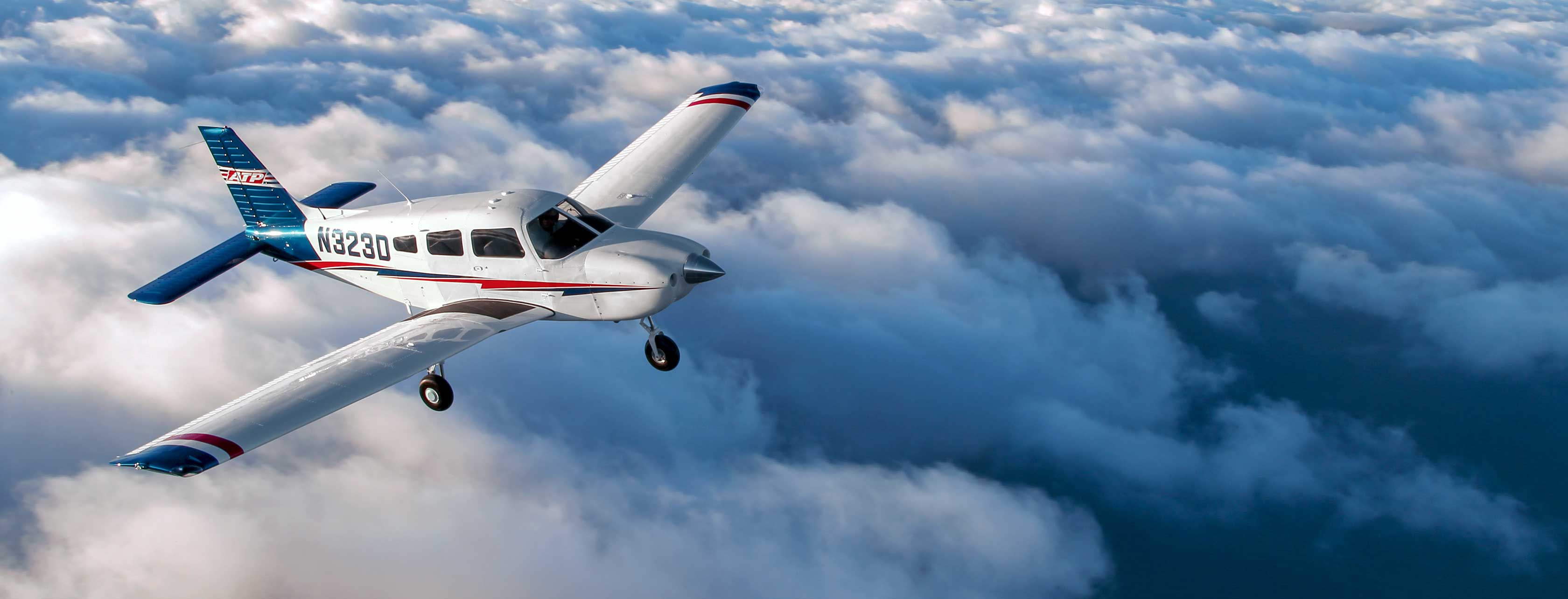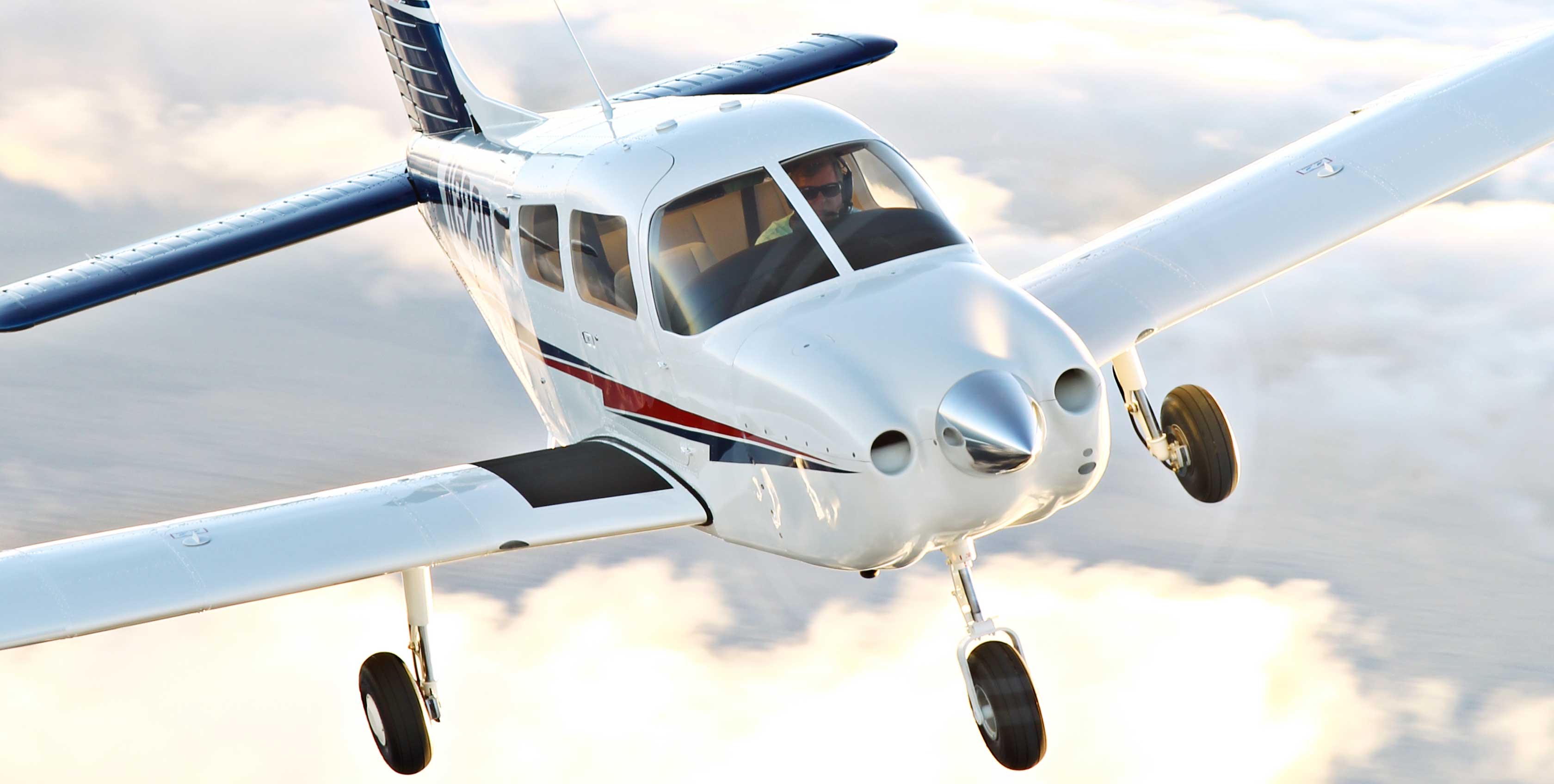Airline Transport Professionals Preparing Pilots for Professional Airline Careers Since 1984
Like many great aviation success stories, Airline Transport Professionals (ATP) started as a single idea: to give ex-military pilots the training they needed for an FAA Airline Transport Pilot certificate, earning their "ticket" to a civilian airline job. That was back in 1984.
As it prepares to celebrate its 28th anniversary, ATP has grown into one of the largest and most highly respected professional flight training academies in the world, called on by airlines to meet their pilot-hiring needs. Their single-minded goal of preparing pilots for professional flying careers hasn't changed one bit.
But that doesn't mean they haven't evolved. "We realized back in the early '90s that we needed to adapt to a changing market. The U.S. military pilot pool was evaporating, and the growth opportunity was in civilian pilot training for the new regional airline model," explained Michael Arnold, ATP's director of marketing and 2008 graduate of the program. "That's when we introduced our ab-initio career pilot program. We already had a fleet of twin engine aircraft, so we were able to offer students a lot of quality cross-country,multi-engine experience in a shorter amount of time."
ATP quickly points out that while they've been successful as a training company, it's their graduates' career achievements that deserve attention. In 2011, ATP helped place over 300 graduates with the regional airlines. Why are ATP grads so successful' "One reason airlines recruit ATP grads is that they're a 'known quantity,'" Arnold replied. "With so much multiengine experience, professional crewmember development and regional jet training, ATP grads make life easy on airline training departments.
"What sets our program apart is our intense focus on certification that allows us to offer a fixed-cost pricing model," Arnold continued. "From the earliest stages of private pilot training through CFI school, students must meet performance benchmarks that we know, from experience, will allow them to meet their certification objective on time and on budget."
This model of total-immersion, fast-track training combined with successful job placement has left ATP as one of the only flight schools with access to financing for its students. Sallie Mae, Wells Fargo and numerous other smaller lenders continue to work with ATP students.
"Our lenders stuck with ATP, while dropping nearly every other flight school because of our graduates' extraordinary payback performance," Arnold said. "We attribute that to their success in achieving the commercial pilot employment they set out to achieve from the beginning."
Those who make the grade benefit from a flight-training program that has been tailored over the years to meet and often exceed the hiring requirements of the regional airlines. One area where the program really excels is in multi-engine cross-country experience.
"Our students and instructors fly in an FAA approved crew environment, so we have two instrument-rated pilots in the twins," Arnold explained. We literally run our flights coast-to-coast so the students and instructors build cross-country time quickly. In the last six months, ATP airplanes landed at over 270 different airports. That's not your typical flight school operational model, and it provides the kind of real-world experience valued by airlines."
In 2010, congress tasked the FAA with improving airline safety by increasing experience requirements for Part 121 airline new hires. One of the most emphasized knowledge areas is professionalism in the crew environment. This is exactly what ATP trains from day one and puts into practice during the cross-country phase of the program. Every flight is conducted using standardized procedures. "Our students get a lot of diverse experience in all kinds of weather, ATC environments and terrain," Arnold said.
Airlines recognize that ATP offers a practical solution to the current pilot shortage. The school has invested millions of dollars in a growing fleet of trainers, giving them large scale training capacity and capabilities. In October 2010, ATP placed an order for up to 30 new multi-engine Piper Seminoles, an investment totaling about $18 million. Recognizing the value of turbine flight experience in preparing airline pilot candidates, ATP entered into a fleet-purchase agreement and long-term investment in the Diamond D-JET program.
"It's a significant move for us," Arnold said. "Ultimately, we plan on phasing out some of our multi-engine cross-country time in favor of jet cross-country experience."
While it eagerly awaits its D-JETs, ATP is already performing airline-style jet training in its five regional jet fixed-base simulators, which provide excellent transitional training for prospective regional new hires. "Once students go through our RJ program, they are proving to be ideal candidates for the regional jobs - even over some of the higher-time pilots who apply. This allows us to maintain strong relationships with the leading regional airlines," he added.
Arnold also said that ATP designed its fast track program around a total-immersion model where students train from private multi to commercial pilot with CFI certificates in just 90 days. But he was quick to stress that, "Just because you train fast doesn't mean the quality is any less; consider that military pilots go from zero time to flying jets in about the same time. By flying every single day, knowledge retention is higher and muscle memory develops faster," he said. "It has proven to be the most effective training model." Aside from the learning benefits of a fast-track program, there are real career benefits, as well.
You've heard that in the airline business "seniority is everything," but what does that mean to you, a potential career-pilot student?
"In the airline business, everything about your pilot career is based on the concept of seniority. The faster you get hired, the faster you build seniority. In a strictly unionized workforce, your seniority is what offers you all the quality-of-life improvements you want: getting your optimal schedule, working 15 days a month, earning more, upgrading to larger jets, flying exotic international routes and, in bad times, avoiding a furlough," Arnold said. "This traces back to our fast-track training model, where pilots graduate with a commercial pilot certificate and certified flight instructor certificate with multi-engine and instrument ratings. It's very realistic in the current hiring market to attain that airline job in about one year.



